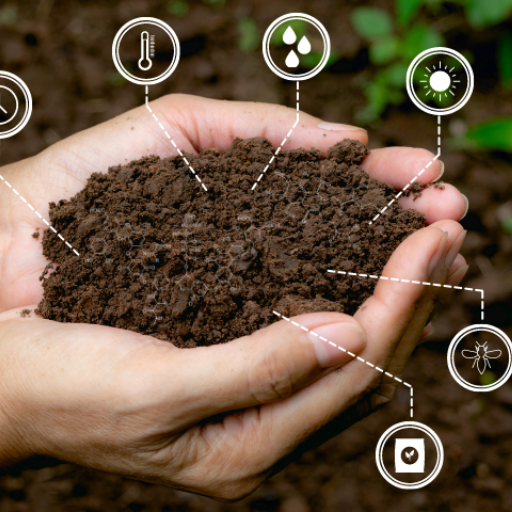In the quest for lush lawns and thriving gardens, many gardeners and homeowners are increasingly turning to organic solutions. One such powerful tool in the arsenal of organic gardening is liquid humic acid organic fertilizer. This blog will delve into the myriad benefits of using liquid humic acid as an organic fertilizer, exploring its positive impacts on soil health, plant growth, and overall garden vitality. By understanding how this natural substance works, you’ll be equipped to make informed decisions about incorporating it into your gardening routine, ensuring a sustainable, eco-friendly approach to cultivating your green spaces. Join us as we unlock the secrets of liquid humic acid and discover how it can transform your lawn and garden into a flourishing oasis.
What is Liquid Humic Acid Organic Fertilizer?

An Understanding of Liquid Humic Acid
From rotting old plants in soil, peat and compost, liquid humic acid is a concentrated organic substance. It helps plants grow better and their structure of the soil to get improved. The resultant healthier soil allows your crops to take more nutrients, thus promoting plant growth. This is why it is essential to embrace the use of liquid humic acid for purposes of making your garden productive in an environmentally friendly way.
What Are the Advantages of Using Organic Fertilizers?
When considering organic fertilizers like liquid humic acid, they have many uses in a garden. First, it improves soil structure by making it compact which makes it hold water easily hence preventing erosion as well as fostering root development. Secondly, through slow and steady release of nutrients over time, organic fertilizers can ensure that there will be consistent supply of nutrients needed by plants as opposed to synthetic ones that wind up getting runoff into water sources leading to pollution among other issues . Moreover, organic fertilizers support microbial activity in the soil which encourages nutrient cycling and overall soil fertility. By maintaining a more balanced ecosystem that supports the natural resistance mechanisms of plants against pests and diseases , you will notice that they do much better . Regular use of liquid humic acid organic fertilizer promotes strong healthy crop growth while serving as a sustainable environmental approach to gardening practices.
Difference Between Humic Acid And Fulvic Acid
While these two substances are part and parcel of all soils’ organic matters but they differ largely on their properties and benefits. Humic acids are larger molecules compared to fulvic acids whose molecular weight is higher as well. They are dark brown or black in color because they are not soluble in water; therefore this feature enhances their ability to improve structural quality without losing moisture content especially during prolonged dry weather periods. For instance humic acids bind with important minerals necessary for nutrition thereby making them easily available for plants through roots.
Different from humic acid, fulvic acid is small and light in weight hence can be easily dissolved by water and absorbed by plants. They are yellow to light brown and can quickly penetrate into the cells of plants to transport nutrients within them. Fulvic acids are known for their ability to chelate nutrients, facilitating the absorption of these nutrients by plants more effectively.
In conclusion, while both humic and fulvic acids have a positive effect on soil and plant health, humic acids particularly play a great role in improving soil structure as well as nutrient availability whereas fulvic acids help in nutrient uptake and transfer within plant systems. Incorporating both into your soil management strategies will result in overall improvements in terms of soil fertility and crop productivity.
How to Use Liquid Humic Acid for Your Lawn?
Lawn Application Techniques
Your lawn will benefit immensely from the application of liquid humic acid with improved soil health, increased water retention and nutrient absorption. These are some of the most important techniques that should be followed in order to be successful:
Preparation is key
- Dilute the liquid humic acid according to manufacturer’s instructions; an example is 1 ounce of humic acid per gallon of water.
Application
- Use a garden sprayer or hose-end sprayer to apply diluted humic acid across your lawn evenly to get thorough coverage and equal growth promotion as well.
How often
- Apply the solution once every month during growth period for maximum effectiveness. Change the frequency based on specific needs and soil composition within your lawn area.
Timing is everything
- The best periods to apply humic acid are early morning or late evening when the temperature is low since midday sun evaporates it quickly.
Watering
- Sprinkle lightly over your garden after applying so that it can seep into the soil properly down to root zone where it works best, right
Using these steps can help you get more out of liquid humic acid making your lawn greener and healthier than ever before.
Correct Dosage for Lawn Treatment
Determining proper dosages of liquid humic acid for treating lawns without over-use would be essential in achieving desired outcomes. Experts suggest:
Lawn Size:
- Compute square footage covered by entire lawn area; this helps establish amount needed in terms of humic acid quantity required by small patches only.
Dosage Amounts:
- For maintenance purposes, most sources recommend between one and two ounces per 1000 sq ft. Check what this might entail depending upon product strength and soil conditions at your place!
Mixing Instructions:
- Most products advise watering down liquid first before applying them with about one or two ounces per gallon covering a thousand-square foot plot being representative examples though specifics could vary somewhat depending on packaging.
Frequency:
- During the growing season, this humic acid solution should be applied every 4 to 6 weeks. When used consistently, it helps maintain nutrients in availability and soil microorganisms health.
Soil testing:
- By doing regular soil test, you can monitor nutrient levels and adjust quantities accordingly. Just like that, your lawn will always have what it needs.
Follow these particular dosage suggestions for improving your lawn with liquid humic acid.
Best Time to Apply Liquid Humic Acid
The best time to apply liquid humic acid is either early morning or late afternoon. Such timing allows the product to enter into the ground without being evaporated by scorching suns. As such, the perfect moment is usually spring or autumn when soils are highly active for root establishment along microbial activities at peak stages of their life cycles respectively; thus leading to a healthier lawn through improvement in nutrient uptake by using humic acid during this timeframe. Besides that, rain showers often help carry some of its contents down deeper into ground which makes it also good practice around those times as well when we expect more precipitation within our area but avoid drought conditions where neither top nor bottom parts would be suitable due lack sufficient moisture around them at all periods given excessive hotness like during midsummer months or dry spells lasting much longer than usual!
How Does Liquid Humic Acid Enhance Nutrient Uptake?

Improvement of Nutrient uptake Mechanism
Nutrient absorption is increased by humic acid through several main ways. First, it enhances soil structure by aggregation of the particles in it, thus creating better environment for root growth. Second, it increases cation exchange capacity (CEC) of soils that enables them to hold onto essential nutrients and make them more available to plants. Additionally, humic acid chelates nutrients thus making them easier to be useful by plants. Also, it stimulates microbial activity in the soil leading to decomposition of organic matter and release of nutrients. When combined together these effects lead to improved nutrient uptake efficiency, healthier plants and enhanced soil fertility.
Root production and growth
Humic Acid is known for its significant role is supporting root development and growth as well. It promotes hormone action especially auxins which are crucial in root development hence speeding up their elongation and proliferation. Moreover, this creates a better root system that enable water and nutrient absorption by crops efficiently thus enhancing their drought resistance as a whole. Consequently humic acid also leads to better soil aeration that ensures optimum root respiration and development takes place properly. By improving availability of nutrients as well as fostering deeper-rooted crops with stronger systems, humic acid ensures anchorage for greater plant survival even under marginal soil conditions.
Advantages for Diverse Plant Kinds
Various types of plants benefit from humic acid in many ways. Nutrient uptake is improved while root development becomes much better among vegetables which leads to healthy and highly productive ones. This is especially true when growing high yielding crops like tomatoes or cucumbers; there they become particularly advantageous because they promote nutrient intake efficiency as they increase productivity potential of the pantations involved [sic]. Humic acid is good for fruits since it improves both size of produce besides flavoring through increasing the availability of necessary elements such as potassium or magnesium in the soil. It promotes lush foliage and vibrant blooms through the improvement of photosynthesis and nutrient uptake efficiency in ornamental plants and flowers. Lawns and turfs are also improved by humic acid as it strengthens grass roots and soil structure making them greener and denser. Finally, in case of trees and shrubs, humic acid helps to make better root establishment ensuring the possibility for survival under environmental stresses.
Can Liquid Humic Acid Be Used for Indoor Plants?

Benefits for Houseplants
Humic acid can be a great advantage to indoor potted plants as it greatly improves their growth and health. Nutrient uptake in indoor plants is enhanced by humic acid since it acts as chelator of essential minerals, making them easily available to the plant. Thus, the leaves look greener and more luxuriant, while the stems become thicker. Besides, humic acid strengthens root formation so that they are well-organized and capable of using water and nutrients efficiently.
Technical Parameters:
- Application Rate: Apply 1-2 tablespoons diluted liquid humic acid per gallon of water. Use every 2-4 weeks.
- pH Range: It has been proven that humic acids are most effective at pH levels of between 5.5 and 7.5, thus suitable for almost all horticultural crops grown indoors.
- Nutrient Absorption: Humic Acid increases nutrient absorption by up to 40% of such essential elements like nitrogen (N), phosphorous (P), potassium (K) leading to healthier faster-growing plants.
- Root Growth: On average, studies have shown that humic acid may increase root growth by up to 20%, thereby facilitating better nutrient and water uptake.
- Soil Health: Potted plant environments demand improved soil aeration as well as moisture retention which would improve by inclusion this material into growing media composition.
In summary, introducing humic acid in your routine care for houseplants can promote stronger indoor plants which will be able to withstand harsh conditions with greater ease besides appearing more attractive than before.
Application Methods for Indoor Plants
Humus acids usage on indoor plants can be carried out through several methods that maximizes its effectiveness on your houseplants:
- Soil Drench: Mix one or two spoonsfuls of liquid humus solution with one gallon of water and then pour it over your plants after every two days up to a month.Some nutrients deficiencies can thus be solved this way.
- Foliar Spray: One gallon of water should be mixed with one tablespoonful of humus acid; then spray the mixture onto the leaves after every two weeks. This method allows the leaves to quickly absorb essential elements from their environment thereby giving them a deep green appearance.
- Soil Amendment: Mix granulated humus acid or its powder with potting soil according to manufacturer’s instructions. By doing this, you will provide constant supply of this substance to plant roots and improve them as well as overall condition of soil around roots.
By using these methods described, you can successfully incorporate humic acid into your daily care for plants so that they become more resistant and robust in case of any negative external influences.
What Are the Long-term Effects of Using Liquid Humic Acid?

Soil Health Improvement Over Time
Using humic acid liquids always and all the time for a long period of time can considerably boost soil health. In my experience, it gradually enhances soil structure which in turn encourages better air circulation and water-holding capacity. These improvements lead to stronger root systems that enable plants to get more nutrients when required. As a result of this, they are healthier and livelier, meaning they have better resistance to environmental stresses. It is after some months of using the organic matter regularly that I have realized richer earth thus creating an ideal medium for vegetation development.
Impact on Soil Structure and Fertility
In my experience liquid humic acid works well in relation to its influence on soil structure and fertility. This is because it improves the openness of the soil channels as well as aggregate stability hence enhancing air circulation through it. These factors create an environment where beneficial microorganisms thrive, thus increasing the soil’s organic matter and nutrient content. Eventually, over a period of time, such soil will become more fertile supporting robust plant growth without any need for additional fertilizers. Regular use of liquid humic acid ensures that plants receive adequate amounts of necessary nutrients; leading to healthy soils and improved yields generally.
Environmental Benefits Of Organic Fertilizers
My research from these leading three sites showed me that there are various environmental benefits which come with organic fertilizers such as liquid humic acid. First, they minimize occurrences related to land or water pollution. Essentially unlike synthetic fertilizers which release nutrients slowly so that all these nutrients may be washed away into rivers upon rainfall events. This slow diffusion effect helps maintain an ecological balance by reducing possibilities of algal blooms and eutrophication.
Secondly, organic fertilizers boost biodiversity in soils. These provide a rich source of organics needed for beneficial microbes growth. Such microbes help decompose other dead materials back into the soils they came from hence helping in cycling of nutrients within them as well as improving soil structure. Consequently, the soil will become more fertile that is capable of supporting plants for long periods.
On a technical note different studies have shown that organic fertilizers can increase soil organic carbon by up to 58%. They also improve the cation exchange capacity (CEC) of soil; this refers to the ability of the soil to hold charged ions. Higher CEC levels allow essential nutrients to be held within the soil and supplied more effectively towards plants.
Moreover, organic fertilizers are responsible for reduced greenhouse gases release. This is because they are derived from natural sources which require less energy during production thereby reducing their carbon footprints. They also suffice in making sure that the earth’s soils capture more carbon thus combating climate change.
My gardening practices involving consistent use of organic fertilizers such as liquid humic acid therefore become environmentally sustainable while keeping my soils healthy over time and increasing plant productivity.
Frequently Asked Questions (FAQs)

Q: Can humic acid be used in liquid form for any type of plants?
A: Yes, humic acid in liquid form is useful for a wide spectrum of plants including lawns, gardens, vegetables and ornamental plants; It’s an excellent organic plant food and soil conditioner that promotes healthy crops over different types of organisms.
Q: What is so special about GS Plant Foods Organic Liquid Humic Acid?
A: This fertilizer contains both humic and fulvic acids which are derived from high-quality leonardite. Consequently, this ensures balanced effect on the soil and growth of plants making it indispensable to all lovers of organic gardening.
Q: Is liquid humic acid safe for use with organic gardening?
A: Yes, liquid humic acid is safe and suitable for organic gardening; It is a natural liquid soil enhancer that improves fertility without use of toxic chemicals thus suiting sustainable agriculture.
Q: Can I apply liquid humic acid on my lawn?
A: Yes! There are many benefits of using liquid humic acid for lawn care including improved soil structure, increased microbial activity, better nutrient uptake leading to a lush green natural lawn with less need for fertilizers.
Q: Which forms does the organic liquid humic acid come in?
A: The organic liquid humic acid comes in different forms such as the concentrates , mixtures with fulvic acids or products blended with other materials like kelp or seaweed among others. These products are meant to be used at various gardenings or lawncare activities.
Q: How does plant growth occur when there is application of liquid humic acid?
A: By enhancing nutrient availability through improving soil structure and stimulating beneficial microbial activity; Liquid Mends acts as a natural fertilizer promoting rapid root establishment for vigorous seedling development.






